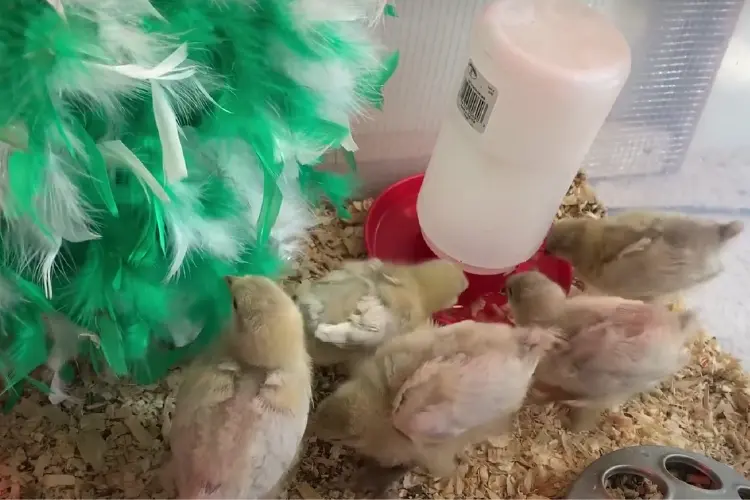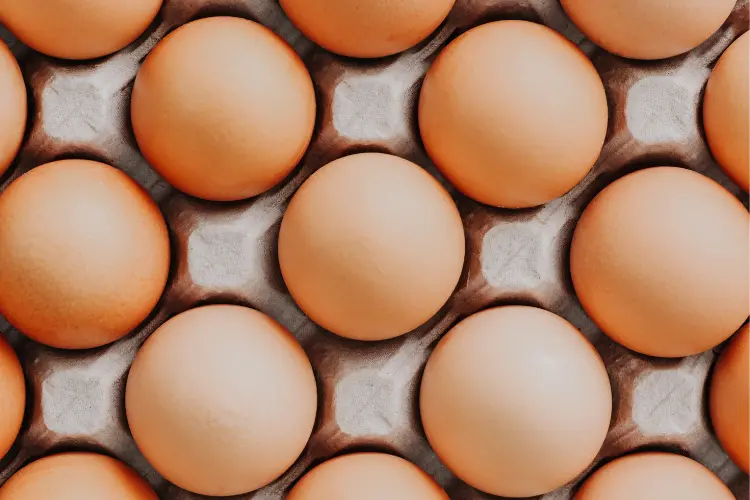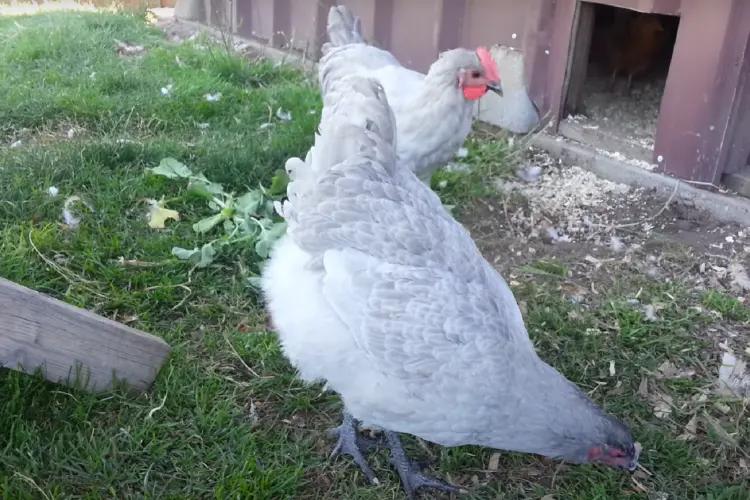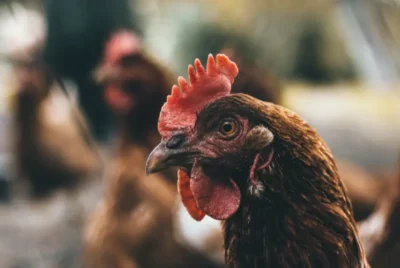All About the Lavender Orpington: Care and Breeding Tips
Whether you’re an avid poultry enthusiast or just starting your journey, the allure of the Lavender Orpington is undeniable. Its majestic lavender plumage and gentle demeanor make it a standout in any flock. Yet, as with any breed, raising them isn’t just about admiring their beauty. Many keepers face challenges in understanding their needs, from optimizing their diet to ensuring successful breeding.
If you’ve found yourself puzzled by the nuances of Lavender Orpington care or seeking more information to maximize their wellbeing, you’re not alone. Dive into our comprehensive guide to discover insights and expert advice tailored for this unique breed.
Overview of Lavender Orpington
- Type: Standard Orpington (Lavender color not recognized)
- Class: English
- Temperament: Calm, friendly
- Suitable for Children: Yes
- Broody: Yes
- Heat Tolerance: Requires shade and water in summer
- Cold Tolerance: Yes
- Space Requirement: 4-10 square feet per bird
- Beginner-Friendly: Yes
- Egg Production: 170-200/year
- Egg Size: Medium
- Egg Color: Light Brown
- Dual Purpose: Yes
- Mature Weight: Male: 10lb, Female: 8lb
- Comb Type: Single, five-point
- Heritage Breed: No
- Processing Age: 16-20 weeks
- Lifespan: 8-10 years
- Pricing: $4-$8 per chick (depending on sex)
Background and History of the Orpington
The Orpington chicken heralded from the town of Orpington in England, was the brainchild of William Cook in the 1800s. Crafted with the intent of creating the ultimate dual-purpose bird, Cook’s Orpingtons swiftly gained recognition for their prolific egg-laying and substantial meat yield. As their fame transcended borders, they found admirers in the U.S., with variations in colors like white, red, and the particularly beloved buff complementing the original black. However, the mid-20th century witnessed a decline in their popularity due to the dominance of large-scale poultry farms. Their status dwindled to being a “threatened” breed.
Yet, recent decades have seen a revival in their fortunes, especially with the introduction of the Lavender Orpington in the late 1990s—a shade resulting from intensive U.K. breeding, ensuring that a pair of Lavender Orpingtons produce offspring of the same hue. Today, Orpingtons are a testament to heritage breeding and remain a favorite among poultry enthusiasts.
Breed Standard
The Lavender Orpington’s unique coloring might not have official recognition in the United States or the United Kingdom at present. However, given their growing popularity, there’s a possibility that this could change in the near future.
When it comes to the general breed standard for Orpingtons, regardless of color, certain characteristics are emphasized. These fluffy chicken breeds should possess a broad and robust body, with a low stance close to the ground. Their backs should be noticeably short and gently curved, and their tails are expected to be relatively short as well.
Adhering to these breed standards helps maintain the integrity and traits of the Orpington breed, ensuring that they continue to thrive as beloved poultry additions.
Physical Appearance of Lavender Orpingtons
Color
The defining characteristic of the Lavender Orpington is undoubtedly its unique and captivating coloration. As the name suggests, these chickens display a soft lavender hue, which can be described as a muted gray-blue shade. Unlike other blue chickens that may show lacing or variations in color, these chickens boast a solid, even shade throughout, giving them a particularly elegant and refined appearance.

Size
Lavender Orpingtons are a large breed. Their stature is impressive, and they present a broad, robust body which is characteristic of the Orpington lineage. Their size makes them easily distinguishable from many other breeds and adds to their overall allure.
Weight
In alignment with their size, Lavender Orpingtons have a significant weight. Roosters (males) of this breed can reach a weight of up to 10 pounds. On the other hand, hens (females) are slightly lighter, typically weighing around 8 pounds.
Lavender Orpington Chicks Appearance
When it comes to their chicks, you might expect them to mirror the lavender shade of the adults immediately, but that’s not the case. Instead, Lavender Orpington chicks are often pale yellow with faint undertones of gray and lavender. As they age, these shades start to evolve and deepen, gradually culminating in the distinctive lavender color of the adults.
They exhibit the typical fluffiness of most chicks and have black beaks. As they transition into pullets (young hens), traces of the signature lavender hue become increasingly evident, particularly on their wings.

Behavior and Temperament
Imagine Lavender Orpingtons as friendly, gentle, and loving birds. They’re like good friends who are always calm and kind. Beginners in raising chickens will find them easy to take care of. They’re curious, which means they like to explore and learn.
At first, they might seem a bit shy, but if you spend time with them, they’ll become more outgoing and even want to be close to you. They’re like pets and might even sit on your lap if you want them to.
These chickens are peaceful, but sometimes, in a group of different kinds of chickens, they might not stand up for themselves. This can make them targets for other bossier chickens. So, if you see this happening, you might need to help them out.
Noise Level
Orpingtons are often admired for their discreet nature when it comes to vocalizations, and the Lavender variant is no exception. Their muted chirps and clucks make them an excellent choice for those residing in suburban or urban settings, ensuring that your neighbors aren’t disturbed by any relentless chicken chatter.
Broodiness
Lavender Orpington hens are like super moms. They get really attached to their eggs and want to take care of them and their baby chicks. This is great if you want to hatch eggs. But sometimes, they might become too protective and even act tough. This is something to watch out for if you’re not ready for super-protective moms.
Lavender Orpington Egg Color and Production
Lavender Orpingtons not only stand out for their beauty and personality but also for the eggs they lay. These hens lay eggs with light brown shells. The color is classic and charming. On average, you can expect them to lay around 170-200 eggs per year. That’s a pretty good number for a backyard chicken.

When Do They Start Laying Eggs?
Lavender Orpingtons usually start laying eggs when they’re around 5 to 6 months old. It’s like they’re growing up and becoming adults. It might take a little time after they reach that age for them to start laying regularly.
Dual Purpose Breed
Lavender Orpington chickens are considered a dual-purpose breed. Dual-purpose breeds are those that are raised for both meat and egg production. These chickens are known for their excellent egg-laying capabilities as well as their substantial size, making them suitable for meat production. This dual-purpose nature makes them a popular choice among backyard chicken keepers and homesteaders who value both egg production and meat quality in their flock.
Care Guide
Lavender Orpingtons might have a rare color, but they’re simple to care for, especially if you’re new to raising chickens. They’re not too fussy about space, and they can handle different weather. Plus, their friendly nature makes taking care of them even easier.
Feeding
When they’re little, Lavender Orpington chicks need special food. High-protein crumble is their go-to until they’re about 16 weeks old. As adults, their diet can be more varied. They like a mix of pellets and grains. They might also munch on plants, seeds, worms, and bugs. Just avoid things like garlic, onions, beans, and citrus because it can make their eggs taste bad. Also, don’t feed them raw potatoes – it’s bad for them

Chicken Coop Setup
Give these birds enough room to strut around. They’re big, so aim for 8 to 10 square feet per bird in their coop. If there are bossy birds around, they’ll need even more space. Their coop should keep them dry during rain and sheltered from the wind. They like roosts close to the ground, about 10 to 12 inches high, so they don’t hurt themselves jumping
Temperature
These chickens can handle temperatures between 0 to 100 degrees Fahrenheit. They’re more comfortable in the cold because of their fluffy feathers. Just keep them dry when it’s chilly, as wet feathers can make them cold. In the summer, they need shade, dust baths, and cool water to avoid overheating and to keep their lovely lavender feathers from fading, so you should know what temperature is too hot for your chickens.
Free-ranging
Lavender Orpingtons need space to roam. Each bird should have 10 to 12 square feet outside. They’re not great flyers, so a three-foot fence is enough. Keep them entertained with things like piles of leaves or hanging cabbage treats.
Common Health Issues of Lavender Orpington
Lavender Orpingtons are robust chickens with a lifespan of 6 to 9 years. They’re generally strong and can handle the cold pretty well. However, there are some health concerns to watch out for and steps you can take to keep them in top shape.
Because of their fluffy feathers, these chickens can attract mites and lice. These little critters can be bothersome. To help, provide them with a dust bath – they love rolling around in the dirt, and it helps keep those pests away. Make sure dust baths are available year-round, even in winter.
These chickens have a hearty appetite, which can lead to weight gain and obesity. Being overweight can cause problems like trouble laying eggs, heart issues, and leg problems. So, keep an eye on their weight and control their feed intake if needed
How to Breed the Lavender Color
Breeding these chickens involves understanding the genetics behind the lavender color. Lavender is a recessive gene, which means both parent chickens must carry this gene to produce Lavender Orpington offspring. To achieve this, breed two unrelated Orpingtons with lavender feathers, increasing the likelihood of obtaining Lavender Orpington chicks.
It’s important to note that the lavender gene might be associated with abnormal feather growth, so selecting healthy parent birds is crucial. When acquiring chickens for breeding, choose a reputable breeder to ensure the best genetic outcomes and avoid potential issues.

Where to Buy the Lavender Orpington
If you’re interested in acquiring Lavender Orpington chickens, there are a few avenues to explore. Local breeders and poultry enthusiasts in your area might have these birds available for sale. They can provide you with valuable insights into the breed and its care. Poultry hatcheries, both local and online, are another option. Reputable hatcheries often specialize in breeding specific chicken breeds, including Lavender Orpingtons.
Online marketplaces and dedicated poultry forums can also be sources, but be cautious and verify the credibility of sellers. Whatever your choice, prioritize healthy and well-cared-for birds from reputable sources to ensure a positive addition to your flock.
Conclusion
The Lavender Orpington is a remarkable and captivating breed that offers a unique blend of beauty, temperament, and utility. With their distinctive lavender coloring and fluffy plumage, they stand out in any flock, while their friendly and calm nature makes them an excellent choice for both beginners and experienced poultry enthusiasts.
Whether you’re drawn to their serene presence, their egg-laying prowess, or their potential as a dual-purpose breed, these chickens are sure to enrich your homestead and bring joy to your chicken-raising journey.




